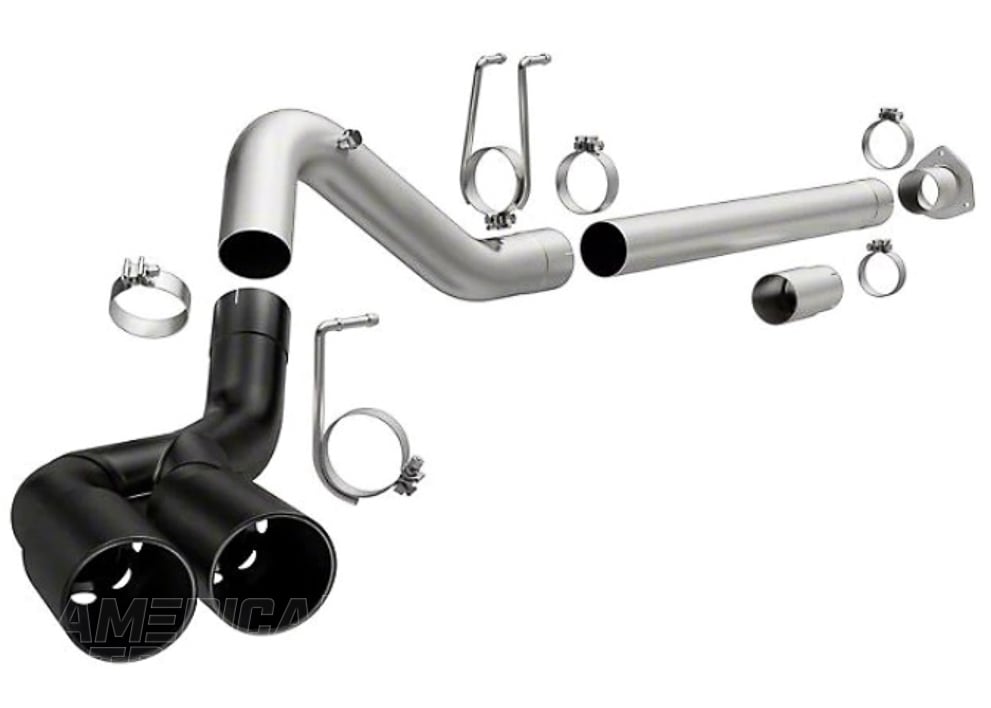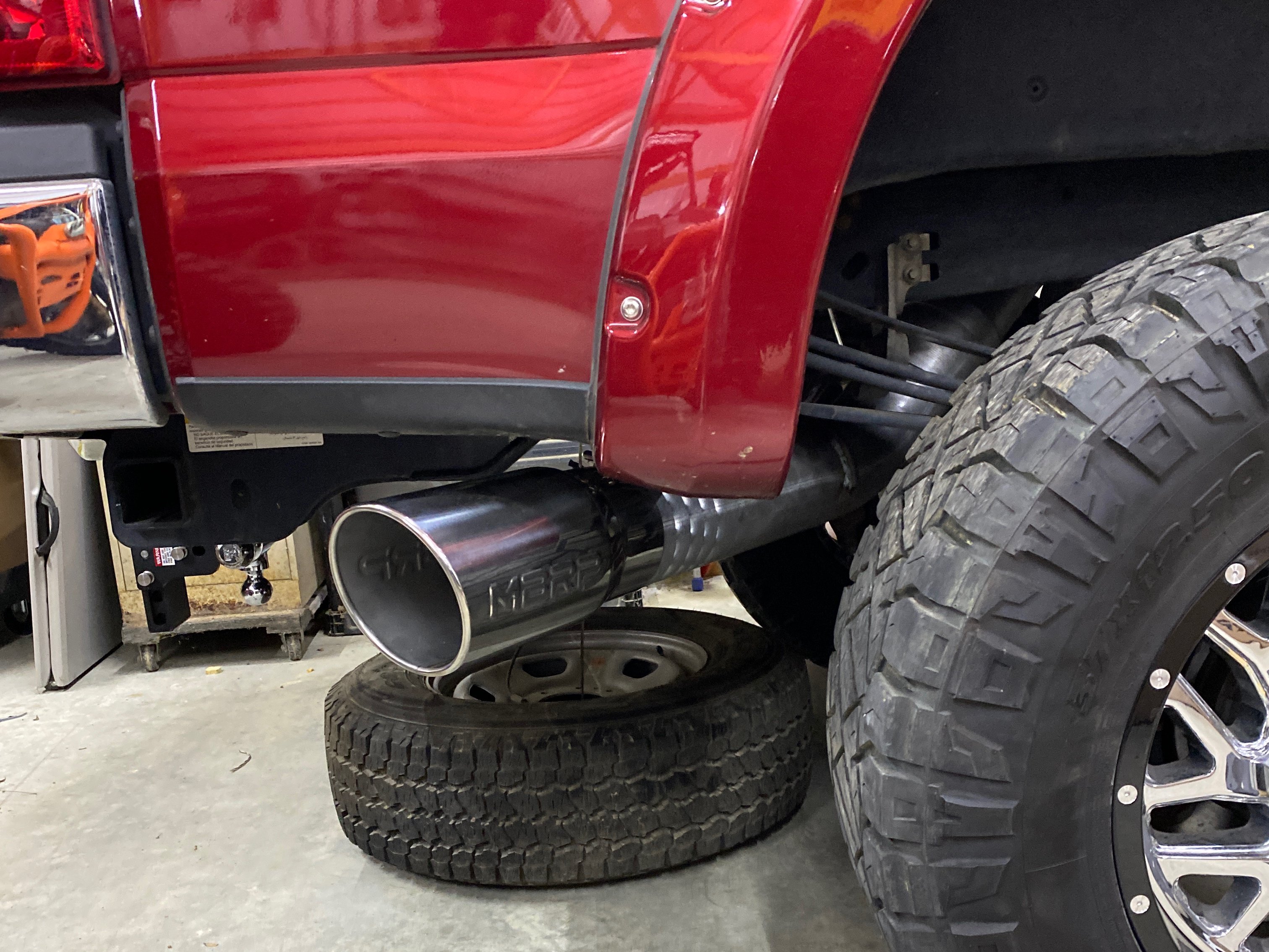Why wouldn’t you want to upgrade the exhaust of your F-250? Even for those who aren’t interested in sound quality, many other benefits exist. An aftermarket exhaust system enhances engine performance and efficiency. This translates to gains in power, potential fuel economy gains, extended exhaust system life, and an all-around better-running engine.
Most F-250 owners will look to upgrade the exhaust in an effort to raise the sound level - basically, they want the bark to match the bite of their truck. Though, it goes without saying all should at least consider an aftermarket exhaust on account of all the benefits brought to the table.

Table of Contents
- Basic Exhaust Breakdown
- Differences Between Gas and Diesel
- How a Diesel Exhaust Brake Works
- Which Upgrades Increase Power? And Which Upgrade Sound?
- Where Should the Exhaust Exit?
Shop F250 Exhaust
